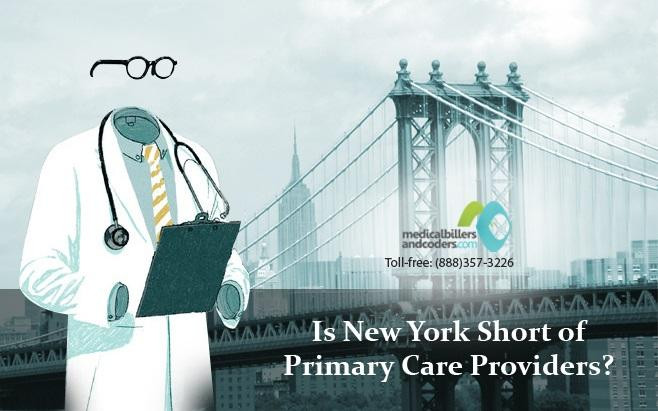
The crisis is indeed real. New York is facing a statewide shortage of primary care physicians, and it is nowhere near getting resolved as of now. The Healthcare Association of New York State reports that there are over a thousand unfilled physician positions across New York, of which nearly one-third of the shortage pertains to primary care. A doctor or other licensed medical professional who manages a person’s health care over time. Primary care providers diagnose and treat a wide range of common medical conditions.
In 2013, a report published by Robert Graham Center estimated that the state of New York will fall short of at least an additional 1200+ physicians by 2030. According to the American Association of Medical Colleges (AAMC), there is a nationwide shortage of physicians, the number of which is estimated to rise up to 90,000 by the year 2020. Growing concerns over this issue have encouraged a team of industry experts at medicalbillersandcoders.com to sum up the fundamental causes that continue to aggravate this crisis and to help understand how primary care billing and coding services can help curb the losses experienced by primary care practitioners. Having a Primary care provider can give you a trusting, ongoing relationship with one medical professional over time.
- Although the federal bodies predict a 17% increase in the number of physicians in the coming decade, baby boomers are turning 65 at the rate of 36%, of which a significant portion are doctors themselves, who are currently aging out of the workforce. So, by the time Affordable Care Act is implemented, at least one-third of all practicing physicians in the US would have retired. Adding to that, Obamacare continues to register uninsured beyond the 11 million who have already registered for the program. In light of these statistics, the AAMC estimates that the shortage of primary care physicians will persist and that this will affect, in particular, the aging population who are going to need medical care now more than ever.
- According to the AAMC, 62% of the medical graduates from New York end up practicing in other states. The president of The Associated Medical Schools of New York brought to light that 11% of the total country’s physicians get trained in New York, but most of them don’t stay there. On the other hand, medical schools and universities in Utah are reporting a drastic increase in the number of first-year students, while some institutions like the School of Medicine within Texas Tech University have sought to reduce the length of their academic courses by a year. Moreover, very few graduates actually choose primary care over other specialized practices, while many become interns and enter family practice.
- In addition, the Healthcare Association of New York reported that 888 physicians were hired last year, to practice in New York City alone, but the number of physicians who retired the same year exceeded 2100. The same report also indicated that graduates tend to move to other specialty fields, given that primary care does not really pay well enough for the practitioners to cope with their student loans.
To learn more about 4 Reasons Why New York is Short of Primary Care Providers, click here: https://bit.ly/3C7GnyG Contact us at info@medicalbillersandcoders.com/ 888-357-3226.


Comments
Post a Comment